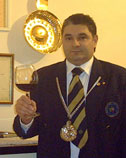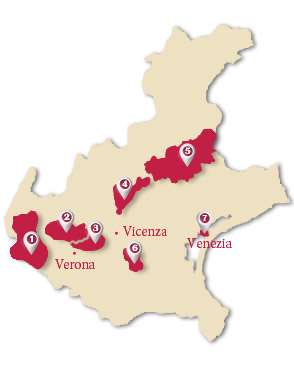Veneto: land of Amarone

Our sommelier for Veneto is Roberto Muti
Roberto is Professional Sommelier A.I.S. and AIBES Barman, he is graduated from the State School of Hotel Management of Recoaro Terme, he works with local authorities and wineries, he is a consultant and he is an expert in the art of uncorking champagne with a saber.
Do you need more precise info about Veneto ?
Questions, doubts, clarifications ?
Write Roberto at [email protected]
The Veneto offers a wineculture that dates back to the most ancient traditions: first with the Ancient Romans, continuing throughout Medieval times with the monastic orders, and on through the reign of "Her Serenissima" the Marine Republic of Venice, all this time developing and passing on the cultivation of wine. Today, the Veneto is the region that produces the major quantity of D.O.C. wines in Italy, particularly white wines. In the western part of the region autoctoni vines are still widespread, for example the Garganega. In the eastern part of the region, which underwent the major part of the destruction and devastation brought on by two World Wars, we find imported French vines, including Merlot, Pinot, and Sauvignon. Let's take a look at the principle vineyard zones.
To the right of lake Garda, and to the north of the city of Verona, lies the region of the Veronese, subdivided into the smaller regions of Bardolino, Valpolicella, Soave and Gambellara. These last three zones are characterized by production of a wine that has recently been awarded the classification of D.O.C.G.: Recioto. The name is derived from the word "recia", which means "ear" in the local dialect, and indicates the part of the grape clusters that are the most exposed to the sun. These grapes, selected during the harvest, are sun-dried and made into wine, usually around December, and sometimes February, are the origin of a wine that can be sweet, or dry, depending on whether or not all the sugar in the grapes has been converted to alchohol. Out of all the dry Ricioto wines, the most distingushed is the Amarone: one of most reclaimed wines of the region, a deep rich color of bright cranberries, full bodied, velvety and warm, with a characteristic bouquet that hints of bitter almonds (hence its name: Amarone: the bitter one).
Moving northeast, in the prossimity of the city of Treviso, we find the Trevigiano region. Here in Trevigiano, particularly between the two villages of Valdobbiane and Conegliano, they cultivate the autoctono vine Prosecco, the origin of the most reknowned Spumanti in Italy: the Prosecco di Conegliano-Valdobbiadene, an amabile or sweet wine that achieves maximum expression in the territiory of San Pietro di Barbozza, where it takes the name Superiore di Cartizze.
North of Vicenza we find the tiny zone (in size, but not in importance) of the Breganze vineyards, circling the little village of that same name. A grape of ancient tradition is cultivated here, the Vespaiola, named after the "vespe", (wasps) that cluster around the grape bunches and the sweet juice they exude as they reach maturation. From this grape we are rewarded with one of the great Italian after-dinner wines: the Torcolato. A sweet passito wine, either a yellow-gold or amber color, characterized by an intense bouquet of honey. This exquisite wine ages very well.
Click on any zone to discover it's wines









